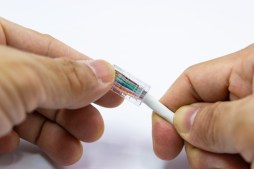A Comprehensive Guide to Understanding Different Types of Internet Connections
In today’s digital age, having a reliable internet connection is crucial for both personal and professional use. However, with so many different types of internet connections available, it can be overwhelming to understand which one is best suited for your needs. In this comprehensive guide, we will explore and explain the various types of internet connections available, including DSL, cable, fiber-optic, and satellite.
DSL (Digital Subscriber Line)
DSL is one of the most commonly used types of internet connections. It utilizes existing telephone lines to transmit data at high speeds. With DSL, you can enjoy fast download speeds ranging from 1 to 100 Mbps (megabits per second) depending on your service provider and location.

One advantage of DSL is its widespread availability. Since it uses existing phone lines, it is accessible in many areas where other types of connections may not be feasible. However, the speed and quality of DSL can vary depending on the distance between your home or office and the nearest telephone exchange.
Cable Internet
Cable internet uses coaxial cables to provide high-speed internet connectivity. It offers faster speeds than DSL and is a popular choice for households that require fast download and upload speeds for activities such as streaming videos or online gaming.
One major advantage of cable internet is its reliability and consistency in delivering high-speed internet access. However, since cable networks are shared among multiple users in a neighborhood or building, heavy usage during peak hours can result in slower speeds.
Fiber-Optic Internet
Fiber-optic internet is considered the gold standard when it comes to high-speed internet connectivity. It uses thin strands of glass or plastic fibers to transmit data using light signals. This technology allows for incredibly fast download and upload speeds that can reach up to 1 Gbps (gigabit per second) or even higher.
The main advantage of fiber-optic internet is its unmatched speed and reliability. It provides a seamless online experience even when multiple devices are connected simultaneously. However, the availability of fiber-optic internet is limited to certain areas, mainly urban locations, due to the expensive infrastructure required for its implementation.
Satellite Internet
Satellite internet is an option for those living in remote or rural areas where other types of connections are not available. It utilizes satellites in space to transmit and receive data signals. Although satellite internet can provide connectivity even in the most isolated regions, it tends to have higher latency (delay) compared to other types of connections.
One downside of satellite internet is its susceptibility to weather conditions such as heavy rain or snow, which can interfere with the signal transmission. Additionally, satellite internet plans often come with data caps and slower speeds compared to DSL, cable, or fiber-optic connections.
In conclusion, understanding the different types of internet connections is essential when choosing the right one for your needs. DSL offers widespread availability but may have varying speeds depending on distance from the telephone exchange. Cable internet provides reliable high-speed access but can be affected by peak usage times. Fiber-optic offers unparalleled speed and reliability but may only be available in select areas. Satellite internet is a viable option for remote locations but may have higher latency and data limitations. Consider your location, usage requirements, and budget when selecting the most suitable type of internet connection for you or your business needs.
This text was generated using a large language model, and select text has been reviewed and moderated for purposes such as readability.


